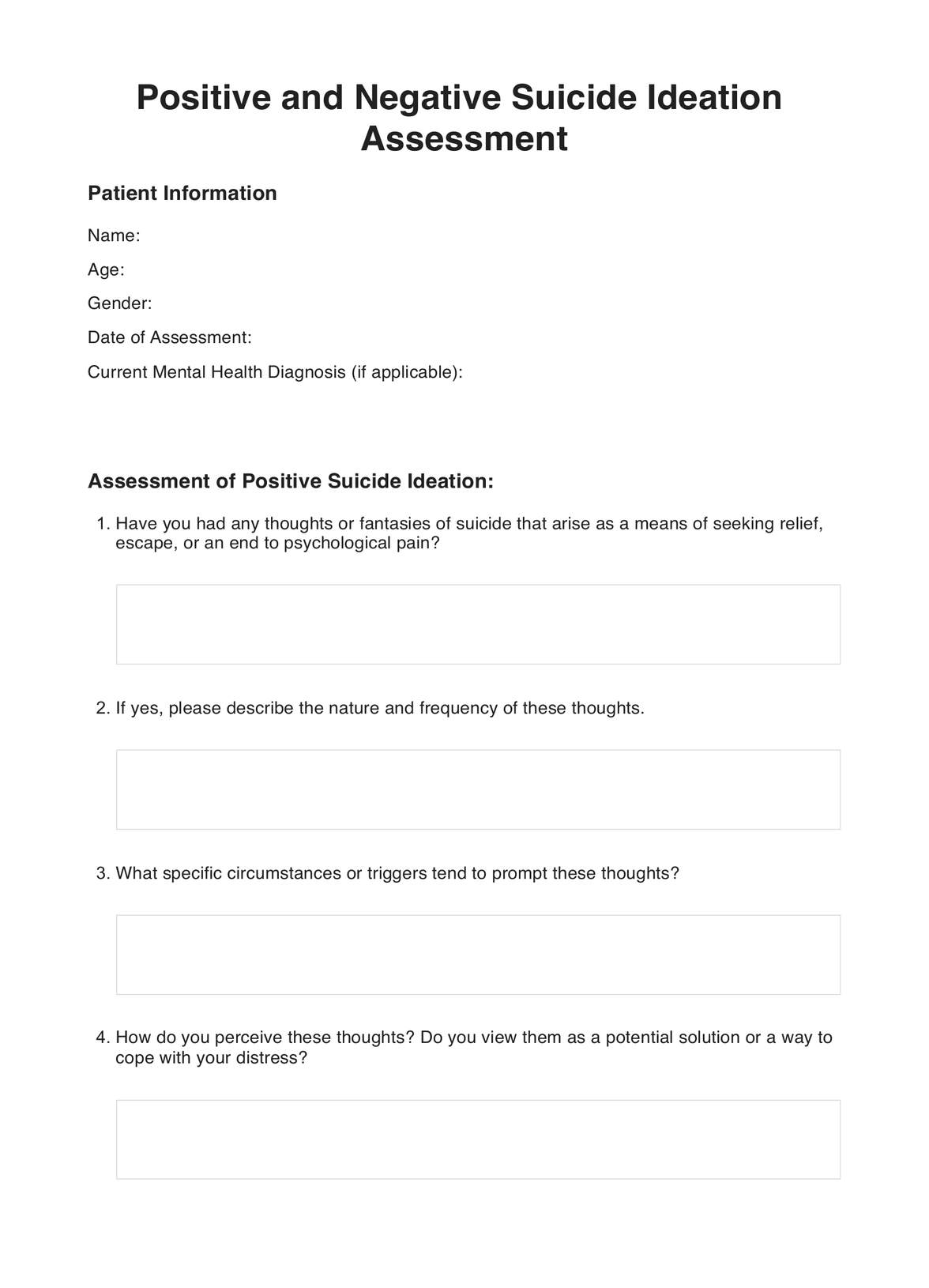Yes, positive and negative suicide ideation represent distinct aspects of suicidal thoughts. Positive suicide ideation focuses on seeking relief or escape, while negative suicide ideation is driven by a sense of hopelessness and the belief that life is unbearable.

Positive and Negative Suicide Ideation
Explore the complex realities of suicide ideation using the Positive and Negative Suicide Ideation tool. Get access to a free PDF template now.
Positive and Negative Suicide Ideation Template
Commonly asked questions
Yes, both positive and negative suicide ideation are concerning and require attention. While positive suicide ideation may reflect an individual's attempt to cope with distress, it still indicates significant psychological pain. Negative suicide ideation signifies high despair and a perceived lack of options.
Healthcare practitioners can assess positive and negative suicide ideation through structured assessments using standardized questionnaires, clinical interviews, and open conversations with patients. Assessment tools and guidelines can assist in evaluating the presence, severity, and associated risk factors of suicidal thoughts.
EHR and practice management software
Get started for free
*No credit card required
Free
$0/usd
Unlimited clients
Telehealth
1GB of storage
Client portal text
Automated billing and online payments











